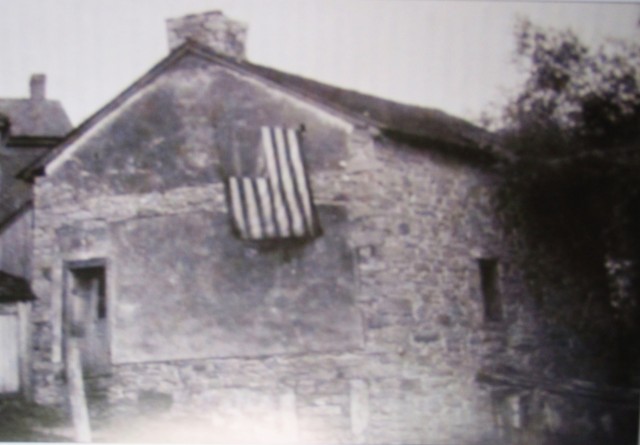
In June 1776, for the first time in the United States Army's young history, a special unit was created comprised only of a single ethnicity. The practice of creating these special units based on a person's background or appearance started with the Continental Congress before even the Declaration of Independence was adopted and then continued until the desegregation of the Army in 1948. This first regiment was comprised entirely of German speaking individuals living in the counties surrounding Philadelphia and from two counties in Maryland. Germans comprised the second largest ethnic group in America, with a high concentration living in the areas mentioned above. However, a portion of those immigrants' religious views included pacifism, which caused a portion of those people to be arrested. Still, enough German-speaking individuals signed up to fill the quota prescribed by Congress. These soldiers were also the first to sign up for a three-year enlistment instead of the shorter terms before.
On the June 27, a Congressional committee resolved "...That four companies of Germans be raised in Pennsylvania, and four companies in Maryland, to compose the German Battalion." Only a few days later, on June 29, the resolution was voted on and passed by the Continental Congress while the final political maneuverings were taking place to adopt the Declaration of Independence. It was hoped Hessian mercenaries would be lured to desert the British Army to fight for the Americans. On the same day that the Declaration of Independence was announced at Independence Hall in Philadelphia the German Regiment officers received their commissions and listened to the words of that resolution read aloud outside the doors. From there the unit would fight with distinction at the early battles of Trenton and Princeton. Later on, the regiment served as part of Sullivan's Expedition heading into New York to punish Native American tribes forperpetrating infamous massacres of civilians in the Wyoming Valley of Pennsylvania. With the unit severely depleted from almost four hundred men and officers in 1776 to one hundred twenty in 1779 the regiment was sent to the Pennsylvania frontier in modern day Northumberland and Montour counties to defend against attacks by Native American and Tories forces. The men would build and man forts in the area. One of them, Fort Rice, still stands today after two hundred and thirty one years. Finally in August 1780, the Germans were recalled by General George Washington to New York, where the unit then became part of the 3rd Maryland Regiment and went south under the command of Nathanael Greene to fight General Lord Cornwallis..
Although this unit remains on the fringe of Revolutionary War history, ethnic-based units became part of American military practice with later battalions only containing certain ethnicities instead of integrated into every unit. During the Civil War black soldiers were separated into the United States Colored Troops (USCT) in 1863. During both World Wars I and II, Native American code talkers gave an edge to Army forces over their enemies. Also in World War II, Japanese-American men who volunteered to serve in the Army were taken from the internment camps to join units such units as the 442nd Infantry Regiment which became the most decorated unit in the war.
After World War II, though, change came to the Army. President Harry Truman fought vigorously for desegregation of the Armed Forces. On July 26, 1948, he issued Executive Order 9981 which called for the desegregation of the military. Today, with every unit now being integrated we no longer have these units based on ethnicity, but the contributions of these Soldiers throughout the United States Army history should not be forgotten.

Social Sharing